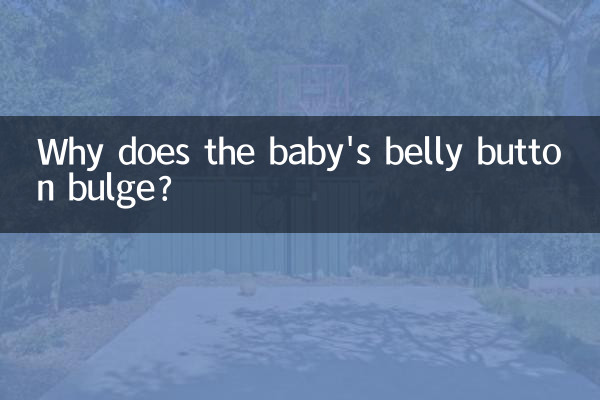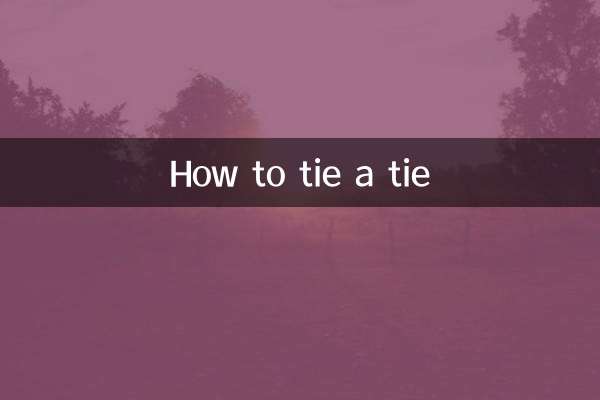Why does the baby's belly button bulge?
In the past 10 days, the topic of infant and child health has continued to be hot on major social platforms and parenting forums. In particular, the phenomenon of "baby belly button protrusion" has caused concern among many new parents. This article will give you detailed answers in terms of causes, symptoms, treatment methods, etc., and also attaches a compilation of recent relevant hot data.
1. Common causes of bulging belly button in babies

The following are the related questions and medical explanations with the highest search volume on the Internet in the past 10 days:
| Ranking | Search keywords | Proportion | medical explanation |
|---|---|---|---|
| 1 | Umbilical hernia | 45% | Intestinal herniation due to incomplete closure of the abdominal wall muscles |
| 2 | navel antler | twenty two% | Tissue residue after umbilical cord detachment |
| 3 | Omphitis | 18% | Redness, swelling and pus caused by bacterial infection |
| 4 | other | 15% | Including urachal fistula, umbilical eczema, etc. |
2. Specific manifestations of umbilical hernia
Symptoms that have been discussed most recently in parenting groups:
| symptom | frequency of occurrence | Things to note |
|---|---|---|
| The bulge is obvious when crying | 89% | May retract when calm |
| Soft and painless to touch | 76% | If it becomes hard, seek medical attention immediately |
| Diameter 1-4cm | 65% | More than 5cm requires attention |
3. 5 issues that new parents are most concerned about
According to recent Q&A platform statistics:
| question | attention index | Professional answers |
|---|---|---|
| Is surgery needed? | ★★★★★ | Most cases can heal on their own before the age of 2 years old |
| Can I press it myself? | ★★★★ | Forcible pressing is prohibited |
| How to take care of it daily? | ★★★ | Keep dry and clean |
| Will it affect development? | ★★★ | Usually does not affect |
| What situations require medical treatment? | ★★★★★ | When redness, swelling, heat and pain occur |
4. Recent hot nursing suggestions
Comprehensive content recently released by the pediatric public accounts of major hospitals:
1.Controversy over the use of umbilical hernia cords: A recent study in a tertiary hospital showed that correct use of special umbilical hernia belts can shorten recovery time by 30%, but incorrect banding may cause skin damage.
2.vaccination impact: The latest guidance from the National Centers for Disease Control and Prevention clearly states that mild umbilical hernia does not affect routine vaccination, but it should be postponed if accompanied by infection symptoms.
3.Things to note when sleeping on your stomach: The American Academy of Pediatrics recently reminded that babies with umbilical hernia can lie prone appropriately, but they must be supervised to avoid excessive pressure on the abdomen.
5. Emergency Identification
According to the analysis of recent emergency case data, immediate medical treatment is required in the following situations:
| red flag | probability of occurrence | Possible reasons |
|---|---|---|
| The raised area turns purple | 3.2% | Intestinal incarceration |
| Continuous crying and restlessness | 5.7% | Possible intestinal obstruction |
| Fever with redness and swelling | 2.1% | signs of infection |
6. Latest guidance from authoritative organizations
The latest "Umbilical Care Guidelines for Infants and Young Children" released by the National Health Commission states:
1. The incidence of umbilical hernia is about 15-20%, and it is as high as 40-50% in premature infants.
2. 90% of cases recover spontaneously within 12-18 months
3. Surgical intervention is only suitable for: those over 4 years old who have not healed on their own, whose diameter is >5cm, and who have become incarcerated, etc.
Recently, the "original methods" that have been hotly discussed on the Internet, such as coin compression, moxibustion treatment, etc., experts warn that there is a risk of infection and do not recommend that parents try it on their own.
Conclusion
Although baby's belly button protrusion is a common phenomenon, it needs to be treated scientifically by parents. It is recommended to take pictures regularly to record the changes in the bumps, and consult a professional pediatrician promptly if any abnormalities are found. Recently, major Internet hospitals have launched online umbilical hernia consultation services to facilitate parents to obtain authoritative guidance.

check the details

check the details